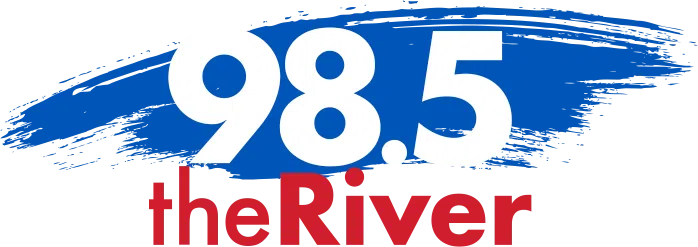By Danilo Masoni
MILAN (Reuters) -Global healthcare stocks have not been this cheap in decades and fund inflows into the sector are picking up, yet the shares remain in the doldrums, highlighting uncertainty over drug pricing policies since Donald Trump returned to the White House.
Pharma companies’ earnings outlook is being obscured by concerns over revived “most-favored-nation” drug pricing rules in the lucrative U.S. market and potential 200% tariffs on pharma imports into the U.S.
Money flooded into drugmakers’ shares during the COVID-19 pandemic but more recently there has been an exodus as investors shifted into Big Tech, leaving the sector cheap but unloved.
At 15.9 times forward earnings, healthcare trades 11% below its long-term average and 20% below global equities, its steepest discount in 16 years, just above a record discount in 2009, based on LSEG Datastream data.
“We’ve moved from cautious optimism to cautious pessimism,” said Stephanie Aliaga, global market strategist at J.P. Morgan Asset Management in New York. “Valuations have gotten even cheaper, but for a reason,” she added, referring to intensifying U.S. policy risks.
But some investors are starting to look past the Washington policy fog and at long-term positive drivers, such as aging populations, RNA-based therapeutics, and breakthroughs in weight-loss and diabetes drugs.
‘ARMAGEDDON SCENARIO’
Alberto Conca, CIO at Swiss wealth manager LFG+ZEST, has been adding exposure to pharma, biotech and medtech in recent weeks, drawn by strong cash-flow yields and the prospect of U.S. rate cuts boosting this rate-sensitive sector.
Interest rate cuts typically support healthcare by lowering R&D funding costs and boosting the value of future cash flows.
“These are quality companies with good growth and defensive features being priced as if we’re heading into an ‘Armageddon scenario’, which I believe is unlikely,” he said.
UK-based M&G Investments has also been selectively adding to healthcare, according to its latest allocation report.
Healthcare funds have seen net inflows since 2024, more than reversing the outflows from late 2022 through 2023, fund tracker EPFR data shows. Although year-to-date, inflows total $7.2 billion, down 41% from last year.
Innovation is accelerating, pipelines are maturing and M&A is showing signs of picking up – yet stock prices are unmoved.
Whether that represents a buying opportunity or a value trap hinges on how and when the policy uncertainty clears, investors said.
CATALYST NEEDED
Historically, healthcare has traded at a modest premium to world stocks, thanks to its defensive profile and steady earnings. But that narrative has unravelled under political pressure from Washington and investors’ love of Big Tech.
Over the past three years, U.S. healthcare has underperformed the S&P 500 by more than 60 percentage points, making it the worst sectoral performer on Wall Street. Its valuation has deepened to a near-record 27% discount, from parity to the S&P in 2023.
“Markets don’t like uncertainty, and that shows up in valuations,” said Eddie Yoon, healthcare sector leader and portfolio manager at Fidelity Investments in Boston. “Being cheap isn’t necessarily a reason to buy. You need a catalyst.”
For now, that catalyst is elusive. The policy uncertainty makes it difficult to forecast future earnings, he said, though he hopes for more clarity by year-end – potentially also paving the way for more M&A in the industry.
Talks with the Trump administration have yet to clarify how and when drug prices will fall, executives from Eli Lilly and Merck said at a May industry conference.
Yoon, who has typically been underweight Big Pharma due to patent expiry risks, notes smaller, innovative firms are becoming profitable.
“We’re seeing companies go from unprofitable to very profitable,” he said, citing Alnylam and Penumbra as examples he owns. “Historically, that’s been a very good time to own healthcare stocks.”
LFG+ZEST’s Conca, who favours U.S. names like Abbott, Edwards Lifesciences, and AbbVie, along with Sanofi and Recordati in Europe, said interest rate cuts could be a major catalyst.
OUT OF THE WOODS?
In Europe, healthcare is even cheaper than U.S. pharma, trading at 14.3 times forward earnings. A 55% drop in shares of Novo Nordisk in the last year, related in part to concerns over competition in obesity drugs, along with tariff-driven production shifts to the U.S., has weighed on valuations.
“The sector will adapt,” wrote Arnaud Cadart, healthcare analyst at France’s CIC Market Solutions. But that will come “at the cost of rebalancing its revenues and probably transforming its organisations.”
AstraZeneca, for example, has unveiled a $50 billion U.S. investment.
For now, the sector remains in limbo: cheap, but lacking enough visibility to trigger a broad re-rating.
“Healthcare has endured a lot of pain,” said J.P. Morgan’s Aliaga. “We’re not sure if that pain is done, but the worst is likely over, given how extreme the exodus has been.”
(Reporting by Danilo Masoni; Editing by Amanda Cooper and Jane Merriman)





Comments